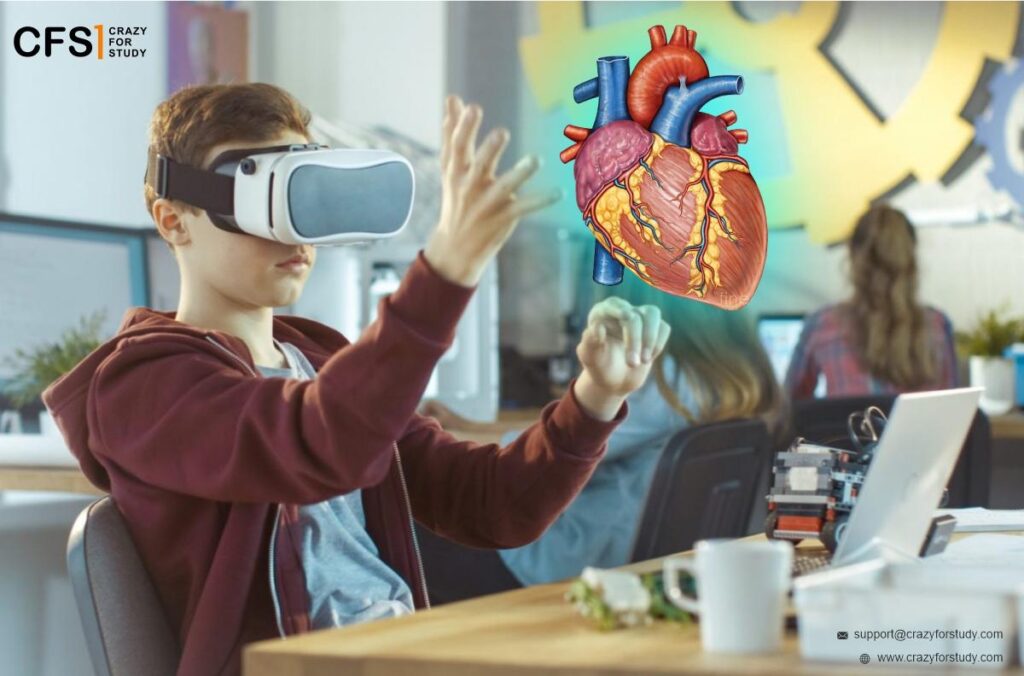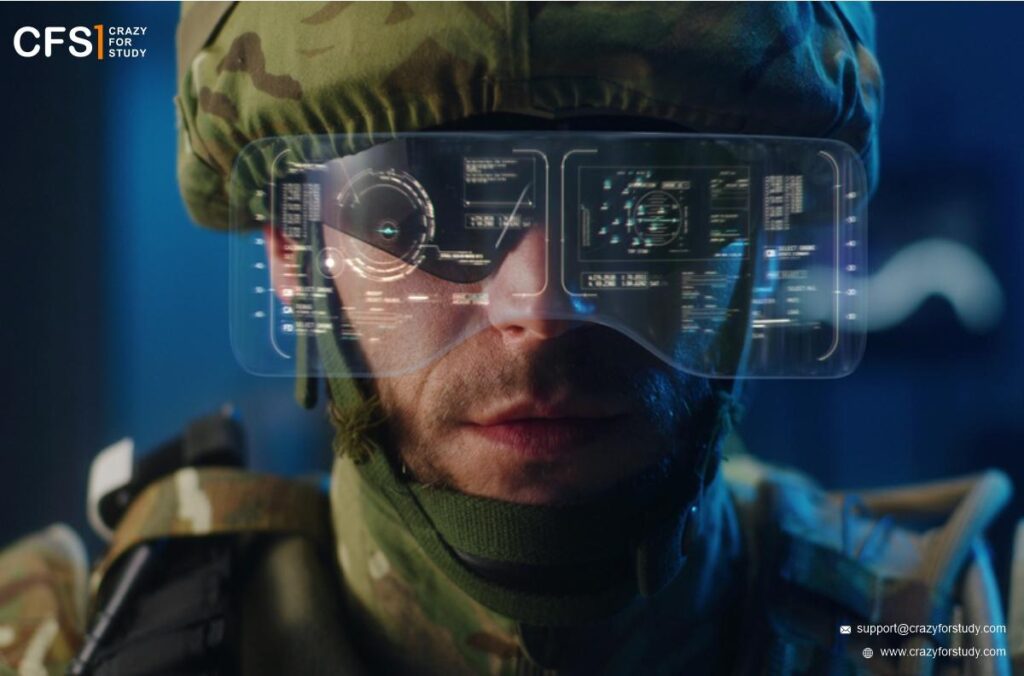Education nowadays is imparted through innovative ways; one such advanced way is through Augmented Reality.
Augmented reality is the combination of shared digital components.
In simple terms, augmented reality is an improved version of the physical world that is attained through digital visual sound, elements, or additional sensory stimuli carried through technology.
AR experience contains 75% existing reality and 25% digital reality. It means it does not switch the complete environment with the virtual; somewhat, it adds virtual matters into the real world.
It is a rising trend amongst companies involved in business applications and mobile computing. Research shows that augmented and virtual reality in the education market is estimated to grow at USD 9.3 billion in 2018 to USD 19.6 billion by 2023.
Colleges and schools are shifting their outdated methods of teaching. Online education came into picture. Various online educational platforms like Crazy for Study, Slader, etc were helping students in their education.
AR is one step ahead. Augmented and virtual reality will entirely transform the way students learn and teachers teach. Smartboards and technology-enabled learning have swapped orthodox textbooks, blackboards, and chalks.
Not only in education, but AR has reached various places like:
Table of Contents
AR in professional training
Industries like aviation, aerospace, military, hospitality, and others have to devote enormous equipment and money to training. With AR, the overheads can be reduced and can make training cooperative.
With AR, professional training becomes easy:
The idea of Mixed reality (existing reality and virtual reality) led by AR can allow astronauts to get practical training and do chores, like keeping a space station.
Sidekick is a NASA project that is testing Hololens to offer virtual instructions and illustrations to use in crew training. Altogether, its usage in military training is the main fascination, as it can benefit train soldiers to use tools in a virtual environment. This is to abstain soldiers from putting themselves in hazard and get qualified with ease.
By now, we have understood how prominent AR usage in education can be. Let us see how AR is applied in the elearning industry in 2020-21
AR in eLearning Applications
With the onset of the pandemic, students are learning from home. It becomes difficult for teachers to keep the students involved in lectures. AR applications helps the elearning market to flourish. This is a win-win situation. Teachers can teach properly and students can learn effectively.
AR-enabled eLearning uses to render the augmented object on the play and screen 3D examples of theories that permit students to engage and learn. Overall, computer graphics are also being used widely, which allow an object to be shown and captured in the augmented environment and extract searches about the objective. It means the presentation can capture the image of objects from the real surroundings and offer a comprehensive description of the object.
AR offers wide-ranging benefits for education. Here are some advantages of using AR in education:
Benefits of AR technology in education
Augmented Reality in education
1. A swift and effective learning system provides benefits
AR permits students to impart education to gain knowledge via rich visuals and immersion into the subject. Technology involves students by offering details about the topic in a voice format. ELearning in AR aims to create a major information assembly sense in humans.
2. Easy access to learning
Augmented Reality can exchange physical forms, posters, textbooks, and written brochures. This method of mobile learning also lessens the fee of learning resources and makes it easy for everybody to access.
3. Immersive practical learning
It can also help in specialized training. Visualize being able to prepare food or activate a space shuttle minus putting others at risk or expenditure of millions of dollars.
4. Engage students
The education system and the gamification of AR can make student’s approach more positive. It makes learning interesting, effortless, and fun and advances capabilities and collaboration. Moreover, it offers infinite opportunities to make lessons less strenuous by filling supreme interactivity through a computer-generated environment. Elearning involves students in an ideal environment where they can see how ideas happen.
AR can help Personalise learning experience for students. Teachers can apply used cases for education. Some of the cases of AR in education are:
1. Virtual field trips
Students can be engaged for a field trip to countries, museums while sitting in the home or classroom. This will offer students opportunities to recognise historical contributes and events to understanding the subjects.
2. Medical education and training
With AR, lessons for physics, chemistry, biology, etc can be taught easily. Presentations can show complex processes such as the human brain and imagine the mental notions in digital reality. This can enhance students’ interest in inventive solutions.
3. Classroom education
AR can turn regular lessons into appealing experiences. Technology can help students better remember and understand information.
Wrapping up
Augmented Reality has revolutionised the traditional education system by changing the whole learning experience.
Also, this will support students in understanding concepts in an immersive environment, which will shorten concepts and make knowledge easy. Moreover, education institutions will also gain huge attention by proposing an excellent learning experience via technology.
Reference links
1. https://elearningindustry.com/augmented-reality-in-education-staggering-insight-into-future





Great post ! This was actually what I was looking for and I am glad to came here!
Guidewire Training